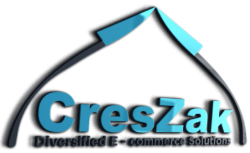How to Boost Your Content Marketing with Personalization
(16).png)
Content marketing is a powerful way to attract, engage, and convert your target audience. But with so much online content, how can you stand out from the crowd and deliver value to your readers? The answer is content personalization.
Content personalization is the process of creating and delivering content tailored to each user's specific needs, preferences, and behaviors. Personalizing your content can provide a better user experience, increase relevance, and boost conversions.
But how can you implement content personalization in your content marketing strategy? This guide will show you how to create a content personalization strategy, provide examples of successful campaigns, and explain the benefits of delivering tailored content to your audience.
What is a Content Personalization Strategy?
A content personalization strategy is a plan that outlines how you will create and deliver personalized content to your target audience. It involves identifying your goals, segmenting your audience, creating customized content, and measuring your results.
A content personalization strategy can help you achieve various objectives, such as:
· Increasing brand awareness
· Generating more leads
· Improving customer loyalty
· Boosting sales
· Reducing churn
To create a content personalization strategy, you need to follow these steps:
1. Define your goals: What do you want to achieve with content personalization? How will you measure your success?
2. Segment your audience: How will you group your users based on their characteristics, behaviors, and needs? What are the key attributes that define each segment?
3. Create personalized content: What content will you create for each element? How will you tailor it to their interests, pain points, and goals?
4. Deliver personalized content: How will you deliver customized content to each segment? What channels and platforms will you use? How will you optimize your content for different devices and formats?
5. Measure your results: How will you track and analyze the performance of your personalized content? What metrics and tools will you use? How will you optimize and improve your strategy based on the data?
Content Personalization Examples
To inspire you, here are some examples of how brands have used content personalization to achieve their goals.
· Netflix: Netflix is one of the most popular streaming services in the world, with over 200 million subscribers. Netflix uses content personalization to recommend movies and shows based on users' viewing history, preferences, and ratings. Netflix also creates personalized thumbnails for each title, showing different images and text depending on what appeals to each user.
· Spotify: Spotify is a leading music streaming service with over 345 million users. Spotify uses content personalization to create customized playlists for each user based on their listening habits, moods, and genres. Spotify also sends personalized emails and notifications to users, highlighting new releases, artists, and podcasts they might like.
· Amazon: Amazon is the world's largest online retailer, with over 300 million customers. Amazon uses content personalization to show relevant products and offers to each user based on their browsing history, purchase history, and wish list. Amazon also uses content personalization to send personalized emails and messages to users, reminding them of items they left in their cart, suggesting complementary products, and offering discounts.
Benefits of Content Personalization
Content personalization can bring many benefits to your business, such as:
· Increased engagement: By providing relevant and valuable content to your users, you can capture their attention, keep them interested, and encourage them to take action.
· Improved loyalty: By delivering personalized experiences to your users, you can build trust, rapport, and commitment. You can also increase customer retention and reduce churn.
· Higher conversions: By matching your content to your user's needs, preferences, and goals, you can increase the likelihood of them converting into leads or customers. You can also increase customer lifetime value and revenue.
· Competitive advantage: By differentiating yourself from your competitors with personalized content, you can stand out and attract more customers.
Conclusion
Content personalization is a powerful way to boost your content marketing strategy. Creating and delivering tailored content to your target audience can provide a better user experience, increase relevance, and boost conversions. For queries, feel free to contact us.

